
U.S. Baseball Hall of Fame elects first members on January 29, 1936
U.S. Baseball Hall of Fame elects first members: On January 29, 1936, the U.S. Baseball Hall of Fame elects its first members in Cooperstown, New York: Ty Cobb, Babe Ruth, Honus Wagner, Christy Matthewson and Walter Johnson.
The Hall of Fame actually had its beginnings in 1935, when plans were made to build a museum devoted to baseball and its 100-year history. A private organization based in Cooperstown called the Clark Foundation thought that establishing the Baseball Hall of Fame in their city would help to reinvigorate the area’s Depression-ravaged economy by attracting tourists. To help sell the idea, the foundation advanced the idea that U.S. Civil War hero Abner Doubleday invented baseball in Cooperstown. The story proved to be phony, but baseball officials, eager to capitalize on the marketing and publicity potential of a museum to honor the game’s greats, gave their support to the project anyway.
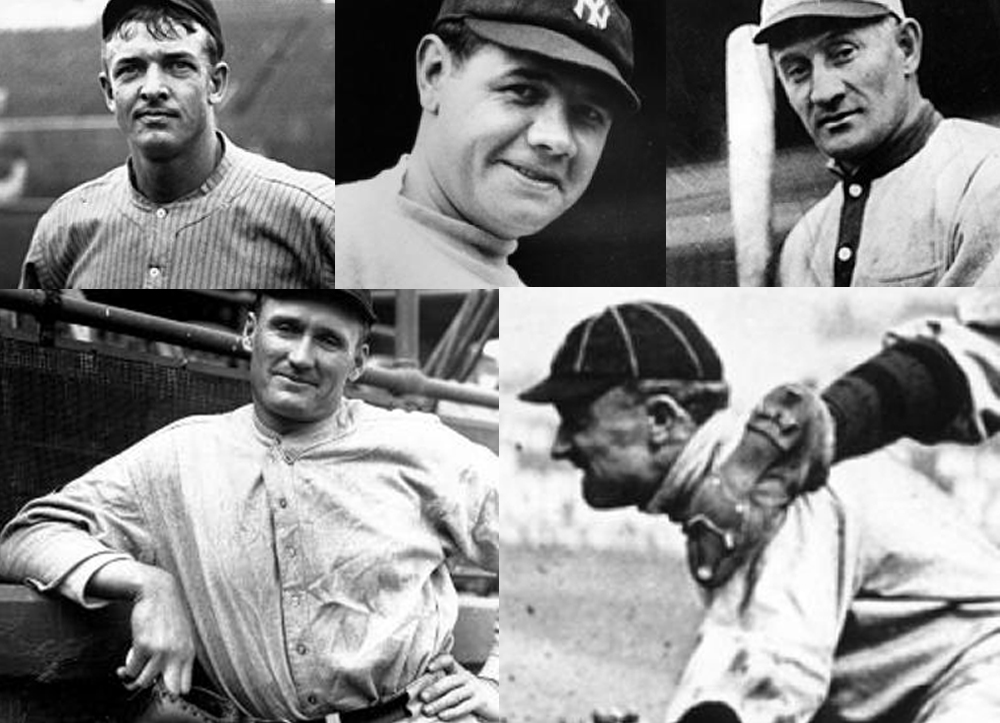
In preparation for the dedication of the Hall of Fame in 1939–thought by many to be the centennial of baseball–the Baseball Writers’ Association of America chose the five greatest superstars of the game as the first class to be inducted: Ty Cobb was the most productive hitter in history; Babe Ruth was both an ace pitcher and the greatest home-run hitter to play the game; Honus Wagner was a versatile star shortstop and batting champion; Christy Matthewson had more wins than any pitcher in National League history; and Walter Johnson was considered one of the most powerful pitchers to ever have taken the mound.
Today, with approximately 350,000 visitors per year, the Hall of Fame continues to be the hub of all things baseball. It has elected 278 individuals, in all, including 225 players, 17 managers, 8 umpires and 28 executives and pioneers.
History.com / Wikipedia / Encyclopedia Britannica /
1936 - 1939 - National Baseball Hall Of Fame.org /
U.S. Baseball Hall of Fame elects first members on January 29, 1936 (YouTube) 
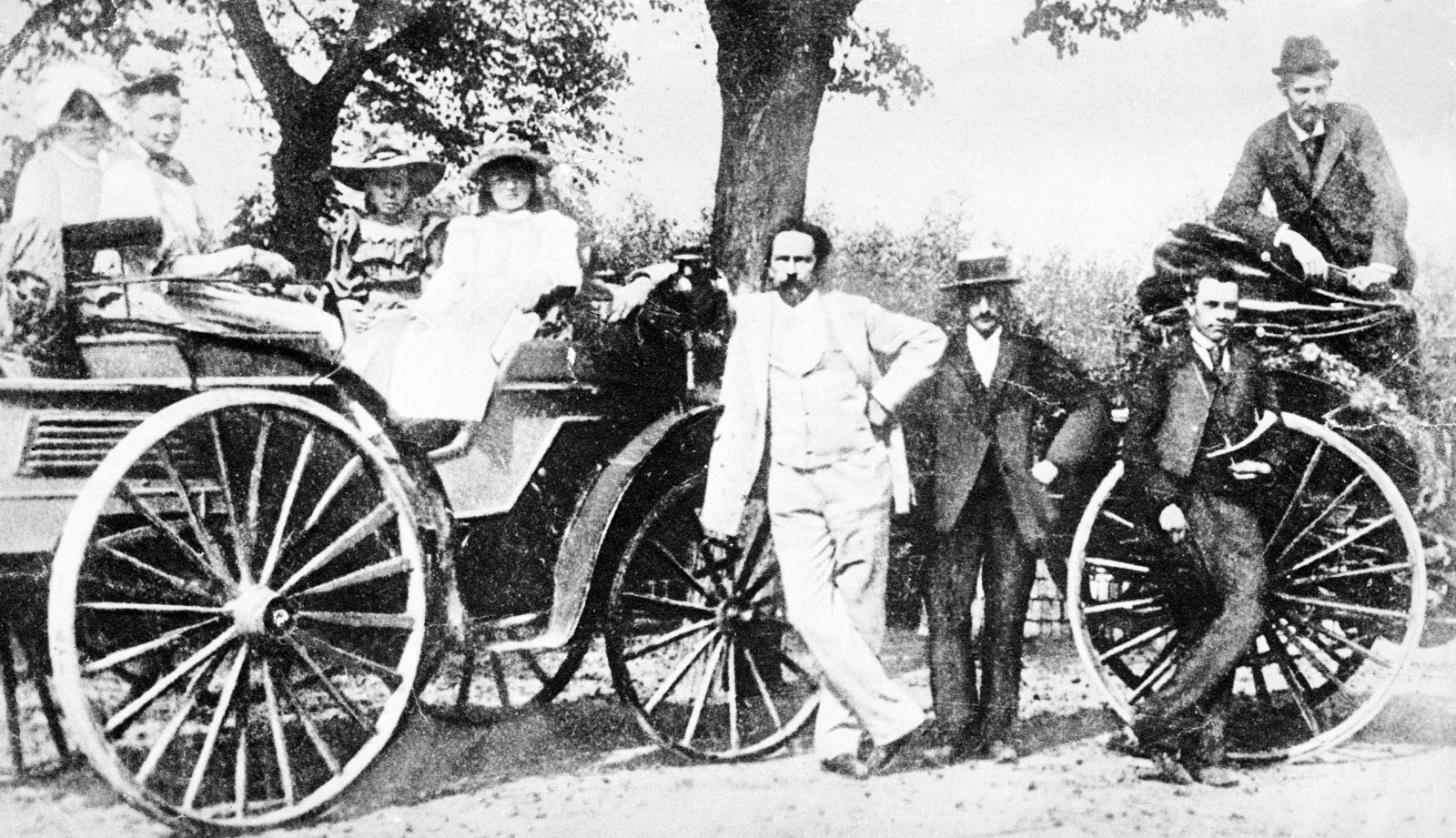
Karl Friedrich Benz and Gottlieb Daimler file patents on the same day on January 29, 1886
Karl Friedrich Benz and Gottlieb Daimler file patents on the same day: On January 29, 1886, the two men, who had never met previously, filed their patents on the same day - in two different German cities.
Benz’s three-wheeled vehicle, which he first drove in 1885, was the first to combine an internal combustion engine with an integrated chassis, while Daimler’s motorized carriage (invented with his collaborator, Wilhelm Maybach) was the world’s first four-wheeled automobile and featured the first high-speed gasoline engine.
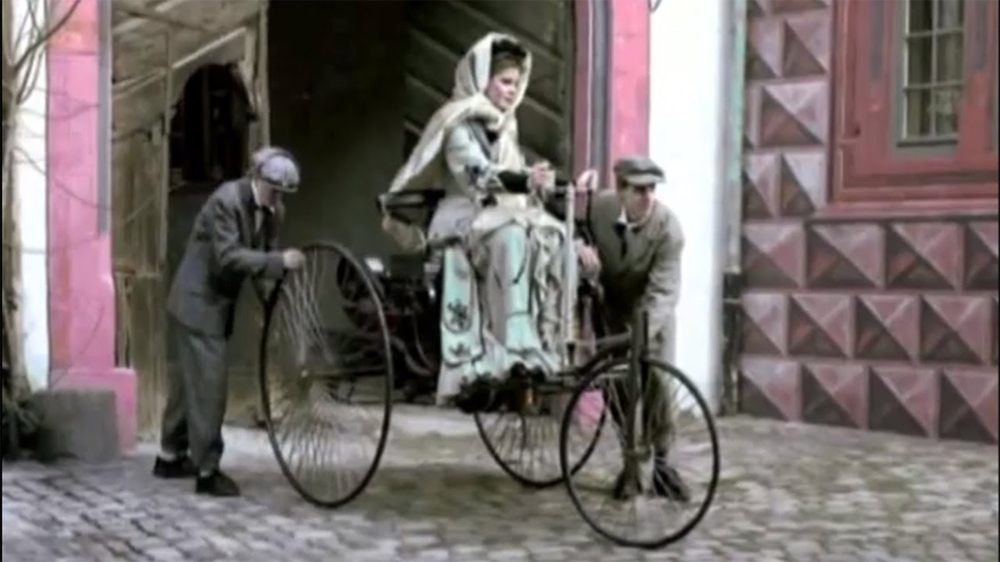
It’s hard to credit a single person with inventing the automobile. Not only did an estimated 100,000 patents lead to cars as we know them, but people also disagree on what qualifies as the first true automobile. For historians who think that early steam-powered road vehicles fit the bill, the answer is Nicolas-Joseph Cugnot, a French military engineer who in 1769 built a steam-powered tricycle for hauling artillery. The vehicle’s single front wheel performed both steering and driving functions, and it could travel at 2.25 miles per hour with four passengers aboard for about 15 minutes. At that point Cugnot’s fardier à vapeur, as it was known, would need to rest in order to recuperate enough power to move again.
Although ideal for trains, early steam engines added so much weight that they proved inefficient for vehicles traveling on regular roads rather than on rails. (Cugnot’s second model weighed 8,000 pounds and had a tendency to tip forward when it wasn’t hauling heavy artillery behind it.) As a result, some observers argue that the first true automobile was gasoline-powered.
History.com / (Karl Friedrich Benz) - (Gottlieb Daimler) Wikipedia / (Karl Friedrich Benz) - (Gottlieb Daimler) Encyclopedia Britannica / Daimler.com /
SciHi.org / Library Of Congress.org /
Karl Friedrich Benz and Gottlieb Daimler file patents on the same day on January 29, 1886 (YouTube) 
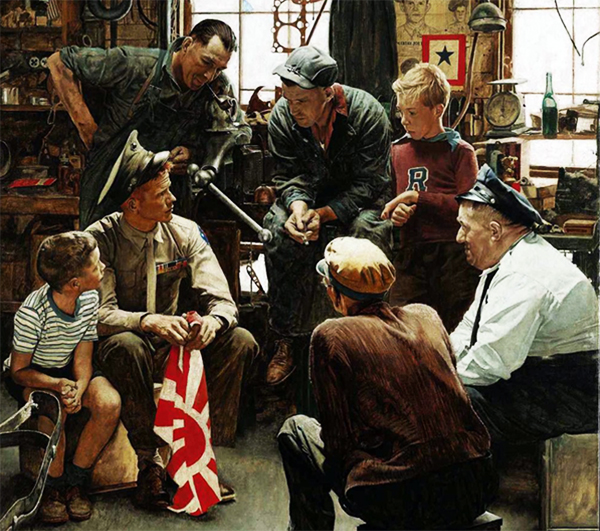
Understanding Military Terminology
Naval Surface Fire Support
(DOD) Fire provided by Navy surface gun and missile systems in support of a unit or units.
Also called NSFS.
See also Fire Support.
Joint Publications (JP 3-09.3) Lose Air Support
Navigation Warfare
Deliberate defensive and offensive action to assure and prevent positioning, navigation, and timing information through coordinated employment of space, cyberspace, and electronic warfare operations.
Also called NAVWAR.
Joint Publications (JP-3-14) Space Operations - Joint Chiefs of Staff
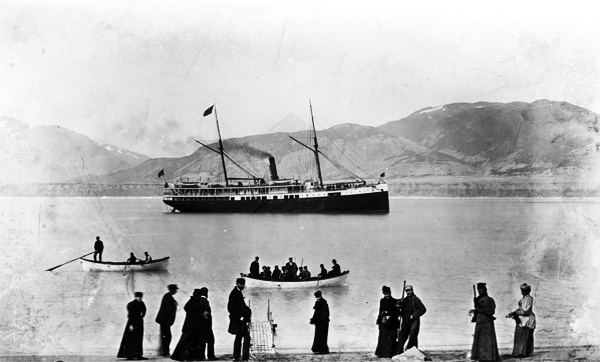
The Old Salt’s Corner
“Tales of Legendary Ghost Ships”
Legend of the SS Valencia
Valencia, SS, the Wreck of (1906): On Monday, January 22, 1906, the coastal passenger liner SS Valencia, en route from San Francisco to Seattle with 108 passengers and 65 crew aboard, passed the entrance to the Strait of Juan de Fuca in foul weather, and ran aground on the southwest coast of Vancouver Island. The ship was on a reef, trapped between sheer rock cliffs and pounding breakers. Uncharted rocks and fierce storms made it impossible for rescue vessels to approach from seaward. Scores of passengers drowned when their lifeboats were wrecked or capsized in the surf. Over the next 36 hours, terrified people huddled on the hurricane deck or clung to the rigging as huge waves slowly broke the ship apart. Finally, as rescuers watched, horrified and powerless, a huge wave swept the remaining passengers and crew into the sea. There were 37 survivors, but 136 persons perished in one of the most tragic maritime disasters in Pacific Northwest history.
The Vessel
The SS Valencia was 1,598-ton, 252-foot, iron-hulled passenger steamer built by the reputable William Cramp and Sons shipyard in Philadelphia in 1882. The ship had three cargo holds and four watertight compartments protecting the engine and boiler room, but was not fitted with a double bottom and her bulkheads were alleged to be insubstantial. The Valencia had a cruising speed of 11 knots and was licensed to carry 286 passengers. She carried seven lifeboats with a capacity of 181 persons, three life rafts with a capacity of 54 person, 368 life preservers and a Lyle line-throwing gun with 1,500 feet of manila line. When the Valencia was inspected on January 6, 1906, all of her equipment was accounted for and in good working order.
The Valencia was owned by the Pacific Coast Steamship Company who purchased it from the Pacific Packing and Navigation Company in 1902. The vessel was primarily engaged on the route between California and Alaska. But, in January 1906, she was diverted to the San Francisco-Seattle run, temporarily replacing the SS City of Puebla, laid up for repairs in San Francisco. The ship’s new master was Captain Oscar M. Johnson, who had been with the company 12 years, working his way up from quartermaster.
The Weather
On Saturday at 11:20 a.m., January 20, 1906, the Valencia left San Francisco in good weather bound for Victoria, B.C., and Seattle. On board were 108 passengers, nine officers and 56 crewmen. The ship reached Cape Mendocino, 190 miles north of San Francisco, early Sunday morning. Then the weather began to deteriorate, with constant rain and haze. Mariners call it “thick” weather. That was the last land or light seen by the Valencia until she wrecked on Vancouver Island.
The weather remained thick with strong winds blowing from the southwest. The Valencia was forced to navigate by dead reckoning, using compass courses and approximate distances sailed, to determine the ship’s position. Captain Johnson reckoned the Valencia would reach the Umatilla Lightship around 9:30 p.m. on Monday, January 22, 1906. Then the quartermaster would start to take soundings to determine their position relative to the coastline. But a following wind and a strong three-knot northern current positioned the vessel more than 20 miles farther north than expected. The ship passed the entrance to the Strait of Juan de Fuca and, at 11:50 p.m., went onto Walla Walla Reef at Shelter Bight, 11 miles southeast of Cape Beale, on the southwest coast of Vancouver Island.
A Night of Wind and Rain
It was high tide when the Valencia went aground, with rain, strong southeast winds blowing 25 to 35 miles an hour and heavy swells coming in from the ocean. First the ship struck a rock a few hundred yards offshore, rupturing the bottom of the hull and flooding the middle cargo hold. Then a large wave lifted the Valencia over the rock, driving her inshore. As waves swung the ship around, Captain Johnson, believing the ship would sink, ordered her beached, stern first. The vessel wound up on the reef, with the bow toward the open ocean, in about four fathoms of water, less than 100 yards from shore.
The coastline was a continuous 100-foot sheer rock cliff constantly pounded by heavy surf. Proceeding along the shoreline was impossible, and the top of the bluff was covered with trees and dense underbrush. A telephone/telegraph line, following a crude trail blazed through the forest, had been strung in the trees linking the Carmanah Light Station to Cape Beale and Bamfield Creek. The Valencia was trapped in an uninhabited wilderness with no means of communication or escape.
Panicked Actions and Errors
As a precaution, Captain Johnson ordered the crew to lower six lifeboats from the hurricane (uppermost) deck to the saloon deck and made fast to the rail, with no order to abandon ship. When the engines stopped, the electricity went out, leaving the ship in total darkness. The passengers, in a mild panic, began boarding the lifeboats, calling out to the deck hands to lower away. In the darkness and confusion, the davit crews, unable to determine if the orders were official, began launching the lifeboats. Within a half hour all six boats were gone.
One lifeboat had been loaded beyond capacity and the aft davit broke away, spilling more than 21 persons into the water. Everyone in the boat drowned. While lowering two of the lifeboats, one end hung up in the falls (an accident called “cockbilling”), upending the boats and dumping about 25 people into the sea. One crewman was rescued; all the others perished. Three lifeboats, carrying approximately 50 persons, were successfully launched; one disappeared, her fate unknown, and the other two capsized in the huge breakers. Only 12 men made it to relative safety, the others either drowned or were dashed against the rocks.
One survivor clambered onto a large rock near shore, only to be swept away by a large wave hours later. Two survivors gained entrance to a shallow cave, but the rising tide forced them onto the face of the cliff where they fell to their deaths. Nine survivors reached shore about 500 yards northwest but out of sight of the wreck. The party spent the night huddled among the rocks. At dawn on Tuesday, they climbed the 100-foot cliff.
continued ...
History Link.org

“I’m Just Sayin”
“With foxes,
we must play the fox.”
“A lie has no leg,
but a scandal has wings.”
“It is madness for sheep to talk peace with a wolf.”
~ Thomas Fuller

“Thought for the Day”
“The best prophet of the future is the past.”
“The poor dog, in life the firmest friend.
The first to welcome, foremost to defend.”
“Man, being reasonable, must get drunk;
the best of life is but intoxication.”
~ Lord Byron

“What I Learned”
“Someday I will learn to stop procrastinating,
but today is not that day.”
“Write a wise saying and your name will live forever.”
“An expert is someone who knows more and more about less and less,
until eventually he knows everything about nothing.”
~ Anonymous

Second Hand News: Articles from Week 05 - January 27, 2020 - February 02, 2020
 Bolton lawyer blames book leak on 'corrupted' review process - Democrats argue 'explosive' details from Bolton book demand his impeachment testimony
• NBA legend Kobe Bryant and 13-year-old daughter killed in helicopter crash
• Three rockets make 'direct hit' on U.S. Embassy in Baghdad: Report
Bolton lawyer blames book leak on 'corrupted' review process - Democrats argue 'explosive' details from Bolton book demand his impeachment testimony
• NBA legend Kobe Bryant and 13-year-old daughter killed in helicopter crash
• Three rockets make 'direct hit' on U.S. Embassy in Baghdad: Report
FBI restricts information from Carter Page FISA surveillance
• Bus carrying Covington Catholic students back from D.C. involved in fatal crash
• Twitter CEO turned down Democratic presidential candidate Tulsi Gabbard fundraiser request
'A dirty word:' After tense exchange, Guantanamo judge says he’ll rule on whether 9/11 plotters were tortured
• Hong Kong declares state of emergency over coronavirus
• Republican senators outraged after Schiff repeats 'head will be on a pike' report
MOST READ:
San Francisco 49ers player invites widow and son of fallen soldier to Super Bowl
• DOJ finds two Carter Page Foreign Intelligence Surveillance Court FISA orders 'not valid'
• 'Devin Nunes: John Bolton was warned about Obama holdovers who 'spy' in Trump White House
• Trey Gowdy: Obama and Biden could potentially be 'relevant' witnesses in Senate impeachment trial
Washington Examiner
 Pilot of helicopter carrying Kobe Bryant, 41, and daughter Gianna, 13, was warned 'you're too low' and flew through fog despite cops GROUNDING their fleet as more of the nine victims are named
Pilot of helicopter carrying Kobe Bryant, 41, and daughter Gianna, 13, was warned 'you're too low' and flew through fog despite cops GROUNDING their fleet as more of the nine victims are named
Donald Trump denies telling John Bolton Ukraine aid was tied to Biden investigation and accuses him of making it up 'to sell his book'
• John Bolton's attorney blames National Security Council for leak of his book
• Moderate Republican Susan Collins yelled out “NOT TRUE” on the Senate floor during Rep. Adam Schiff's closing arguments for removing Donald Trump when he says Republican senators were warned they would have 'their head on a pike' if they voted to impeach
FBI 'is investigating' claims that Ilhan Omar married her own brother and 'will share their findings with ICE'
• Bernie emerges as top Democratic presidential candidate in New Hampshire poll as he continues his surge ahead of former frontrunner Joe Biden
Three rockets score direct hits on the U.S. embassy in Baghdad in latest round of missiles aimed at heavily fortified Green Zone
• Soldiers in firefight with Taliban become the first to give blood to wounded comrades with battlefield blood transfusions - before picking up their guns to carry on
CHINA'S KILLER CORONAVIRUS: Coronavirus death toll rockets to EIGHTY with 24 new fatalities reported at the outbreak's epicentre in Wuhan and nearly 400 new cases as experts warn it can spread BEFORE symptoms show
• FIFTH U.S. case of coronavirus is confirmed in Arizona as it's warned deadly infection can spread before symptoms show
Daily Mail UK

Mr. Answer Man Please Tell Us: What happens to films selected for preservation by the Library of Congress?
Originally established in 1988, the National Film Preservation Act tasks the board with selecting American films that are “culturally, historically, or aesthetically” significant. They can pick up to 25 per year, and the movies must be at least 10 years old.
The National Film Preservation Board is made up of representatives from a number of industry organizations, including the Academy of Motion Picture Arts and Sciences, the Directors Guild of America, and the National Society of Film Critics. With the new selections, there are 725 films in the registry.
Selection for the registry is an honor, of course, but what does it mean beyond that? How does the Library of Congress, the U.S. legislature’s storage agency for documents and media, go about preserving movies?
Selection implores the Library of Congress to get the best possible copy of the film in its original format and store it in their vaults at the National Audio-Visual Conservation Center in Culpeper, Virginia. This ensures the film will be available to future generations.
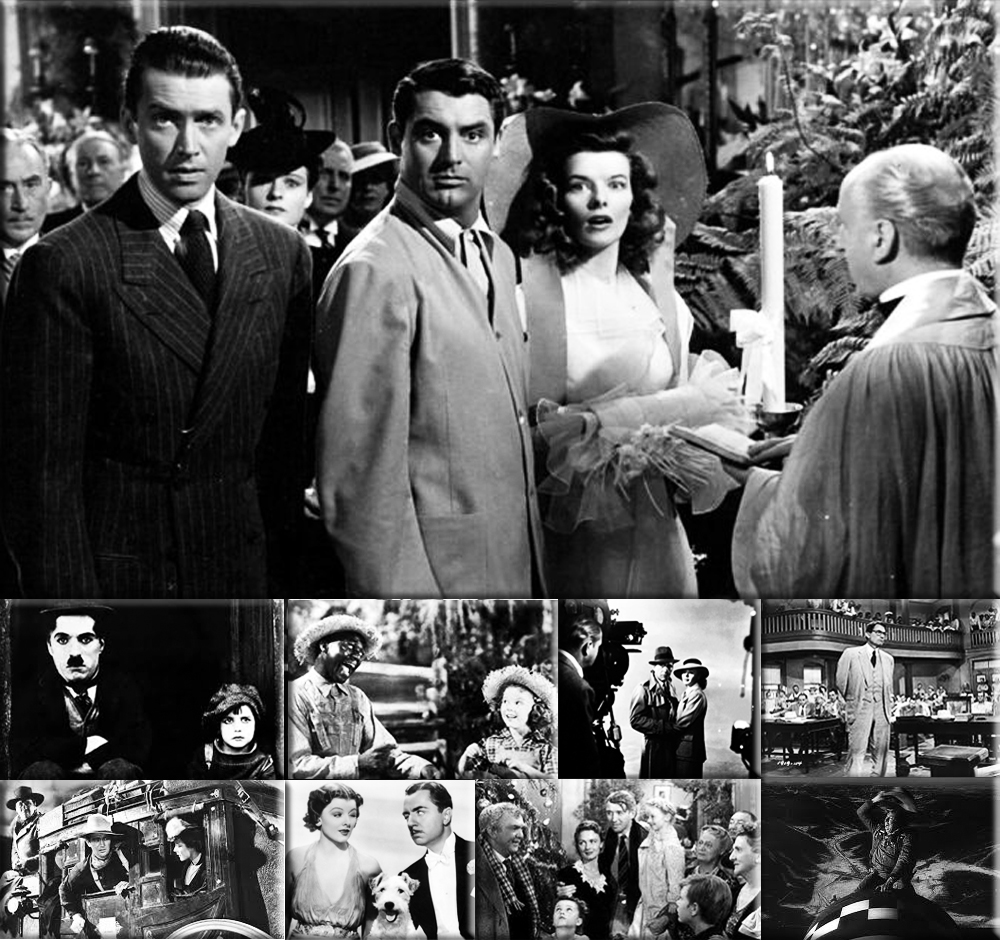
For Hollywood movies, the process is usually pretty easy. “We simply ask the studio to donate a copy”, according to Steve Leggett, program coordinator for the National Film Preservation Board. In some cases, that isn’t even necessary. The Library of Congress has more than 1 million films on file, many of them sent by studios or filmmakers for the sake of copyright registry. When the original Star Wars was selected in 1989, Leggett says, congressional librarians simply checked that the 35 millimeter print submitted with Lucasfilm’s copyright application was in good shape. It was, so no further action was needed.
For older and more esoteric selections like newsreels, silent films, documentaries, and early technical achievements in filmmaking, Leggett says the library often seeks out a copy from the community of preservationists. Universities, private foundations, and hobbyists that preserve old films might get a call from the Library of Congress if they have a good copy of a National Film Registry selection. In rare cases, the library will barter for the film, using redundant materials on its shelves. Other times, it will make a copy or pay the archivist to make a new 35 millimeter copy for them. The Culpeper facility stores nitrate prints, the original film stock for many early movies, in specialty lockers because the material is highly volatile and flammable.
Silent films can be tricky because studios often released, revised, and then re-released versions of the film. When one is selected, Library of Congress archivists collect as many aspects and versions of the film as they can, which might mean contacting several studios and archivists.
Of particular challenge in 2015 was the induction of Symbiopsychotaxiplasm: Take One, William Greaves’s quasi-documentary of his 1968 theatrical project staged in Central Park. The film was screened often through the years, as Greaves gained a cult following. It was released on DVD in 2006, but the National Film Preservation Act specified that the library should seek a copy in the original format, which it didn’t have. Leggett said Greaves’s 1968 original cut was “lost”, but the library worked with the late filmmaker's estate to create a new 35 millimeter version that resembled it.
The Audio-Visual Conservation Center itself, buried on a mountainside, has storage space controlled to stay cool and dry. “A film could survive for hundreds of years there”, Leggett says. He admits the audiovisual center wouldn’t survive a nuclear strike—in the event of World War III, the world might lose its best copy of Buster Keaton’s The General - “but it did survive an earthquake with all materials intact.”
Library of Congress / Wikipedia / Encyclopedia Britannica /
Quora / FilmSite.org
Library of Congress films (YouTube) 

NAVSPEAK aka U.S. Navy Slang
JOPA: Junior Officer Protection Association. An ad-hoc organization of young division officers onboard some surface ships and in most aviation squadrons, assembled to provide a means of guidance and escape from overly-demanding Department Heads. When JOPA is unified it can control some wardroom social functions, but little else.
JORG: Junior Officer Requiring Guidance (see “George”).
JORP: Junior Officer Rest Period. See also SERP.
Jughead: United States Marine, so called because their “high and tight” haircuts make their heads look like inverted jugs in profile. Also “Jarhead”.
Junior Chief: Pejorative term to describe junior enlisted person who is kissing ass for a promotion or on a power trip, or both.
Junk on the Bunks: A type of inspection wherein a Marine places all of his/her issued clothing and 782 gear on a bunk (bed) so that an inspector can verify they have a full complement of uniform items (a full seabag).
Wiktionary.org

Just for you MARINE
Joker: Military journalist, from Private Joker from the movie Full Metal Jacket; also a derogatory term for a junior enlisted servicemember. Also, used by aviators, the time at which only 60 minutes of fuel remain.
Jungle Bunny: Vietnam War–era phrase for infantry.
Junk on [the] Bunk: Inspection where all uniforms and equipment to be displayed is laid on the Marine's rack.
Wikipedia.org

Naval Aviation Squadron Nicknames
HSC-6 Helicopter Sea Combat (HSC) Squadron SIX - nicknamed the “Indians”
United States Navy Naval Air Station - Helicopter Sea Combat (HSC), Naval Air Station North Island, Naval Base Coronado - San Diego, California / Coronado, California / Squadron Lineage: HC-6: June 1, 1956 - July 2011 / HSC-6: July 2011 - present.

Where Did That Saying Come From?

“A man who is his own lawyer has a fool for his client:”
Meaning: Literal meaning.
History: This proverb is based on the opinion, probably first expressed by a lawyer, that self-representation in court is likely to end badly. As with many proverbs, it is difficult to determine a precise origin but this expression first began appearing in print in the early 19th century.
An early example comes in The flowers of wit, or a choice collection of bon mots, by Henry Kett, 1814:
...observed the eminent lawyer, “I hesitate not to pronounce, that every man who is his own lawyer, has a fool for a client.”
Phrases.org UK

Science & Technology

Scientists discover evidence for past high-level sea rise
• Oxygen depletion in ancient oceans caused major mass extinction
• The 'universal break-up criterion' of hot, flowing lava?
• Reconstructing the Anak Krakatau flank collapse that caused the December 2018 Indonesian tsunami
• Quantum engineering atomically smooth single-crystalline silver films
• For the first time, astronomers catch asteroid in the act of changing color
Popular Mechanics

Bizarre News (we couldn’t make up stuff this good - real news story)
Quantum Gravity Could Reverse Cause and Effect

Any theory of quantum gravity is going to have to grapple with some weird time stuff.
You've probably heard of Schrödinger's cat, the unfortunate feline in a box that is simultaneously alive and dead until the box is opened to reveal its actual state. Well, now wrap your mind around Schrödinger's time, a situation in which one event can simultaneously be the cause and effect of another event.
Such a scenario may be inevitable in any theory of quantum gravity, a still-murky area of physics that seeks to combine Albert Einstein's theory of general relativity with the workings of quantum mechanics. In a new paper, scientists create a mashup of the two by imagining starships near an enormous planet whose mass slows time. They conclude that the starships could find themselves in a state where causation is reversed: One event could end up causing another event that happened before it.
“One can devise this kind of scenario where temporal order or cause and effect are in superposition of being reversed or not reversed”, said study co-author Igor Pikovski, a physicist at the Center for Quantum Science and Engineering at Stevens Institute of Technology in New Jersey. “This is something we expect should take place once we have a full theory of quantum gravity.”

Quantum time
The famous Schrödinger's cat thought experiment asks a viewer to imagine a box holding a cat and a radioactive particle, which, once decayed, will kill the unfortunate feline. By the principle of quantum superposition, the cat's survival or death is equally likely until measured - so until the box is opened, the cat is simultaneously alive and dead. In quantum mechanics, superposition means that a particle can exist in multiple states at the same time, just like Schrödinger's cat.
The new thought experiment, published in the journal Nature Communications, combines the principle of quantum superposition with Einstein's theory of general relativity. General relativity says that the mass of a giant object can slow down time. This is well established as true and measurable, Pikovski said; an astronaut orbiting Earth will experience time just a smidge faster than his or her twin back on the planet. (This is also why falling into a black hole would be a very gradual experience.)
Thus, if a futuristic spacecraft were near a massive planet, its crew would experience time as a little bit slower than would people in a fellow spacecraft stationed farther away. Now, throw in a little quantum mechanics, and you can imagine a situation in which that planet is superpositioned simultaneously near to and far away from the two spacecraft.

Time gets weird
In this superpositioned scenario of two ships experiencing time on different timelines, cause and effect could get wonky. For example, say the ships are asked to conduct a training mission in which they fire at each other and dodge each other's fire, knowing full well the time the missiles will launch and intercept their positions. If there's no massive planet nearby messing with time's flow, this is a simple exercise. On the other hand, if that massive planet were present and the ship's captain didn't take the slowing of time into account, the crew might dodge too late and be destroyed.
With the planet in superposition, simultaneously near and far, it would be impossible to know whether the ships would dodge too late and destroy each other or whether they would move aside and survive. What's more, cause and effect could be reversed, Pikovski said. Imagine two events, A and B, that are causally related.
“A and B can influence each other, but in one case A is before B, while in the other case B is before A” in a superposition state, Pikovski said. That means that both A and B are simultaneously the cause and effect of each other. Fortunately for the likely-confused crews of these imaginary spacecraft, Pikovski said, they would have a mathematical way to analyze each other's transmissions to confirm that they were in a superpositioned state.
Obviously, in real life, planets don't move around the galaxy willy-nilly. But the thought experiment could have practical implications for quantum computing, even without working out an entire theory of quantum gravity, Pikovski said. By using superpositions in computations, a quantum-computing system could simultaneously evaluate a process as a cause and as an effect.
“Quantum computers may be able to use this for more efficient computation”, he said.
• The 11 Most Beautiful Mathematical Equations
• The Mysterious Physics of 7 Everyday Things
• Interstellar Space Travel: 7 Futuristic Spacecraft to Explore the Cosmos
Live Science (08/28/2019) 

Second Hand News: Articles from Week 05 - January 27, 2020 - February 02, 2020
 Trump Is Right. Adam Schiff Has Not Paid For Damaging The Country With Years Of Lies
• Federal Judges Could Be Banned From Joining The Federalist Society
• World Mourns Basketball Star Kobe Bryant And Daughter’s Loss In Helicopter Crash
Trump Is Right. Adam Schiff Has Not Paid For Damaging The Country With Years Of Lies
• Federal Judges Could Be Banned From Joining The Federalist Society
• World Mourns Basketball Star Kobe Bryant And Daughter’s Loss In Helicopter Crash
Meet The Man Who Saved 62,000 People During The Holocaust
• Will Any 2020 Democrat Align With Americans On Abortion? ‘In A Word, No’
• Saying ‘Never Again’ Means Nothing If It’s Not Backed Up With Actions
MOST READ:
How A Hardworking Iowa Dad Exposed A Major Democrat Handicap In 2020
• Liberal Hacks Compete For 2020’s Top (Or Worst?) Pundit Award
• Alex Vindman Is Living, Breathing Proof That The Deep State Exists, And It Is Corrupt
• Bernie Sanders: ‘I Don’t Know How Much My Plans Are Going To Cost’
The Federalist

“Adam Schiff, the new Joe McCarthy, along with Nancy Pelosi: Anybody that disagrees with them is a Russian agent, Russian asset...”

“(The Democrats) want to get rid of him now, because otherwise he might be re-elected.”

#SmallBusiessAmerica: The Housing Bull Market joined by the Chemical Index Bull Market.

Soleimani's exit frightens the cronies in Havana, Caracas, Managua, La Paz, Buenos Aires.

“Bernie Sanders is actually winning in these districts in the (CA)Democratic primary.”
 John Batchelor (01/27/2020)
John Batchelor (01/27/2020)


SONG FACTS

“Give Me Shelter” - The Rolling Stones
Album: Let It Bleed
Released 1969 
“Give Me Shelter” is about the political and social unrest at the time. There was the war in Vietnam, race riots, and Charles Manson. Mick Jagger sings of needing shelter from this “Storm”.
Keith Richards wrote most of this song. He strummed the opening on an electric-acoustic guitar modeled after a Chuck Berry favorite.
Merry Clayton is the female vocalist. She is a gospel singer who did backup vocals for a number of artists, including Ray Charles. She had a regular role on the '80s TV show Cagney and Lacey, and played a maid in the movie Maid To Order.
Clayton is featured in the 2013 film 20 Feet from Stardom, where she talks about her appearance on this song.
The Stones were recording late at night in Los Angeles when they decided to use a female vocalist to sing with Jagger on the track. Clayton, who was pregnant at the time, got the call and was retrieved for the session. She showed up with curlers in her hair wearing silk pajamas, and Jagger explained to her that she's be singing the line, “Rape, murder, it's just a shot away”.
She did a take of her line, then decided to “blow them out of this room” on the next take. This time, she delivered a chilling vocal an octave higher, her voice cracking on “murder”. This can be heard at about the 3:04 mark, and you can hear an impressed Mick Jagger in the background saying “Whoo!”
The Rolling Stones didn't release this song as a single, so it never charted. Merry Clayton, who sang backup on the track, recorded her own version of the song  which was released as a single, making #73 U.S. in the summer of 1970.
which was released as a single, making #73 U.S. in the summer of 1970.
Jagger:
“That song was written during the Vietnam War and so it's very much about the awareness that war is always present; it was very present in life at that point. Mary Clayton who did the backing vocals, was a background singer who was known to one of the producers. Suddenly, we wanted someone to sing in the middle of the night. And she was around. She came with her curlers in, straight from bed, and had to sing this really odd lyric. For her it was a little odd - for anyone, in the middle of the night, to sing this one verse I would have been odd. She was great.”
“Give Me Shelter” is the title of the movie that documented The Stones 1969 tour, including the Altamont concert where a fan was stabbed by a Hells Angels security guard. The movie was rush released in 1970 to come out before the Woodstock documentary. It was released on video in 1992, and re-released in theaters in 2000 for the 30th anniversary. George Lucas of Star Wars fame was on the crew for the movie.
The Stones recorded this using old, worn out Triumph amplifiers to get a distinctive sound.
Keith Richards overdubbed layers of guitars on this track, making it a challenge to perform live. He told Rolling Stone:
“That beginning is so eerie, sometimes in a stadium you start to hear echoes. I'm never sure if I'm the right volume.”
Keith Richards stated in his memoir Life (2010):
“TI wrote 'Gimmie Shelter' on a stormy day, sitting in Robert Fraser's apartment in Mount Street. Anita (Pallenberg) was shooting Performance at the time, not far away... It was just a terrible f--king day and it was storming out there. I was sitting there in Mount Street and there was this incredible storm over London, so I got into that mode, just looking out of Robert's window and looking at all these people with their umbrellas being blown out of their grasp and running like hell. And the idea came to me... My thought was storms on other people's minds, not mine. It just happened to hit the moment.”
The Rolling Stones official site (100 Greatest Rolling Stones Songs, Rolling Stone) / Rock & Roll Hall of Fame / Billboard / All Music / Song Facts / Ultimate Classic Rock / The Rolling Stones
Image: “Let It Bleed (album)” by The Rolling Stones

Trivia
● French author Jules Verne is best known for what two 1870 science fiction novels?
Answer to Trivia
● RCA and Columbia were the first two recording companies to produce music records made from what tough, flexible, shiny plastic?
Answer to Trivia
● What 3rd century Bishop in Lycia, part of modern-day Turkey, who is remembered and revered among Catholic and Orthodox Christians, is commonly identified with the holiday season?
Answer to Trivia
● Ex-S.F. 49’er, now Oakland Raider, Jerry Rice holds the all-time record for touchdowns scored in a career: 180 TD’s. Which two players are second and third on the list?
Answer to Trivia

A Test for People Who Know Everything
From the Jeopardy Archives Category - “THE WORDS OF H.G. WELLS” ($200)
“Appropriately, it's the novel in which Wells coined the phrase 'time traveller'.”
● Answer for People Who Do Not Know Everything, or Want to Verify Their Answer Gutenberg.org
From the Jeopardy Archives Category - “THE WORDS OF H.G. WELLS” ($400)
“Wells imagined an overwhelmingly destructive explosive called this 6-letter 'bomb' more than 100 years ago.”
● Answer for People Who Do Not Know Everything, or Want to Verify Their Answer BBC
From the Jeopardy Archives Category - “THE WORDS OF H.G. WELLS” ($600)
“Wells preached and definitely practiced this 2-word phrase for ignoring the conventional constraints of marriage.”
● Answer for People Who Do Not Know Everything, or Want to Verify Their Answer Telegraph UK
From the Jeopardy Archives Category - “THE WORDS OF H.G. WELLS” ($800)
“Long before 'Sliders' or 'Fringe' hit TV screens, Wells talked about these universes in 'Men Like Gods'.”
● Answer for People Who Do Not Know Everything, or Want to Verify Their Answer Space.com
From the Jeopardy Archives Category - “THE WORDS OF H.G. WELLS” ($1,000)
“We use it today for the arrival ashore of a storm; Wells used it to mean the arrival of an airplane.”
● Answer for People Who Do Not Know Everything, or Want to Verify Their Answer Project Gutenberg Australia
Answer to Last Week's Test
From the Jeopardy Archives Category - “THE QUOTABLE WILL ROGERS” ($200)
“'My ancestors didn't come over' on this, 'but they met the boat'.”
● Answer: The Mayflower. Quote Investigator
From the Jeopardy Archives Category - “THE QUOTABLE WILL ROGERS” ($400)
“This then 96-member institution 'opens with a prayer and closes with an investigation'.”
● Answer: The United States Senate. The Trib
From the Jeopardy Archives Category - “THE QUOTABLE WILL ROGERS” ($600)
“A frequent opening line, 'All I know is' this.”
● Answer: “All I know is what I read in the papers”. Brainy Quote
From the Jeopardy Archives Category - “THE QUOTABLE WILL ROGERS” ($800)
“'The country is bigger than' this financial center - 'if they don't believe it, show'em the map'.”
● Answer: Wall Street. Will Rogers Today
From the Jeopardy Archives Category - “THE QUOTABLE WILL ROGERS” ($1,000)
“'I never met' one of these.”
● Answer: “I never met a man I didn't like”. Mental Floss

Joke of the Day

“SECRETS TO INNER PEACE”
If you can start the day without caffeine,
If you can always be cheerful, ignoring aches and pains,
If you can resist complaining and boring people with your troubles,
If you can eat the same food every day and be grateful for it,
If you can understand when your loved ones are too busy to give you any time,
If you can take criticism and blame without resentment ,
If you can conquer tension without medical help,
If you can relax without alcohol,
If you can sleep without the aid of drugs,

Then You Are Probably The Family Dog!
And you thought this was going to get all spiritual ....
Handle every stressful situation like a dog.
If you can't eat it or play with it,
Then lift your hind leg or squat in public,
Pee or Poop on it, and walk away.






































